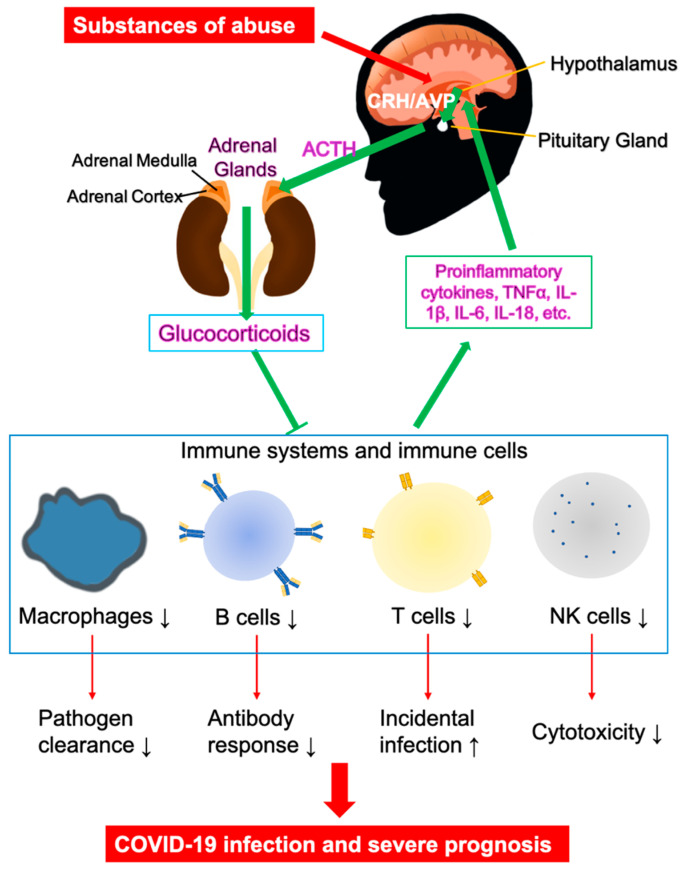Figure 3.
Bidirectional communication between the brain and the immune system. The HPA axis: upon activation (cytokines, pathogens, etc.), the hypothalamus in the brain produces CRH and AVP, activating anterior pituitary, which secretes ACTH. ACTH circulates with general blood stream to reach adrenal gland, which synthesizes the anti-inflammatory molecule, glucocorticoids. Glucocorticoids suppress the immune system and the expression of proinflammatory cytokines, which concludes the negative feedback and turns off the HPA axis. Glucocorticoids suppress the activities of various immune cells, including macrophages, dendritic cells, and T cells, which are responsible for cytokine release. The immunosuppression also involves inhibition of NK cells, B cells, and T cells for reduced cytotoxicity, antibody production, and T cell-mediated immune responses. Substances of abuse alter the HPA axis. Excessive production of glucocorticoids suppresses immune responses to viral infection, leading to high incidences of infection and severe infection in COVID-19. Arrows indicate stimulation; blunted arrows indicate inhibition.

